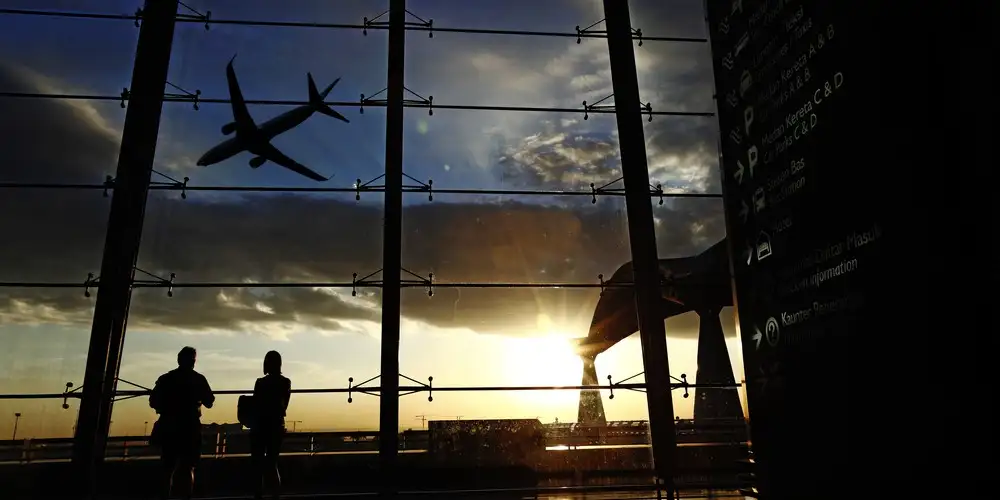
Last week, I reserved flights on United from my home airport, Medford, Oregon, to New York, with a connection in San Francisco. My connection was a bit more than an hour, so I thought I’d be fine. But a week before departure, I started checking the on-time performance of my flight from Medford to San Francisco. And I quickly found that, out of the seven days before departure, that flight would have made my connection only once—the other days it was either delayed an hour or more or canceled outright.
Accordingly, I called United and asked if it could transfer me to an earlier flight, which it did, fortunately without any extra fee. So instead of leaving Medford at a civilized hour of 10:11 a.m., I had to get up at 5 a.m. for an 8:11 a.m. flight; this left me with a boring three-and-a-half-hour wait in SFO rather than the convenient 65 minutes I had originally booked. But when departure day finally arrived, that wait shrunk substantially. Our early flight was held up on the ground for an hour and a half before leaving, so we actually arrived with a bit less than two hours to connect. And that cushion was appreciated, given that most United Express flights and code-shared flights on US Airways at SFO now use the US Airways gates in Terminal 1, and connecting travelers have to schlep on shuttle buses to United’s primary gates at Terminal 3. The net result was that I made the connection comfortably. And to cap the story, I checked the arrivals board before getting on the New York flight, and sure enough, my original flight from Medford has been canceled.
The purpose of this story isn’t to pat myself on the back for being such a smart traveler; it’s to illustrate that connections are among the most frustrating elements of air travel—and given today’s air travel, that’s quite an accomplishment. My story is by no means unique; many of you face the same challenges. And here’s how to manage your itineraries to avoid the worst problems.
Avoid Connecting Entirely
Where possible, get a nonstop flight, even if it costs a bit more. And if you normally use a smaller airport that lacks nonstops to your destination, consider driving to the closest hub that does offer nonstops. Medford is a tough case; driving takes five hours to Portland and at least six to San Francisco. But any time you can drive to a hub airport in three hours or less, drive. As an advantage, you’ll probably find lower fares as well.
Check Your Flight’s History
If you can’t avoid connecting, check on your first flight’s on-time record.
You have two approaches:
- Airlines are supposed to post average monthly figures for each flight, showing the percentages of times it was delayed or canceled. When I checked, Alaska, American, Southwest, United, and US Airways all provided links to that information for each flight display; I couldn’t find it on Delta but it must be in there somewhere. The problem with this system is that the data are not current: In mid-October, figures show for the month of August.
- FlightStats provides both current (same-day) information and historical compilations for most domestic flights. You can also slice and dice the data almost any way you want. To remove duplication from the display, click the “omit codeshares” button.
Pad Your Connecting Time
Today’s typical published minimum connecting times leave almost no slack for any minor glitch. Official times for domestic-to-domestic flights can be as low as 30 minutes. Supposedly, any connection your airline books compensates for connecting times. But those can be misleading: In United’s case, for example, connections at Boston, Chicago, Houston, Newark, and San Francisco involve inter-terminal shuttles, some requiring exiting and re-entering security, and many international airports require terminal transfer outside security. Most airlines’ official contracts allow you to pad your schedule up to four hours at connecting airports, and if schedules allow, an extra hour or two can mean the difference between making and missing a connection.
You Might Also Like:
- Do Airline Baggage Fees Squeeze U.S. Taxpayers?
- 20 Worst Airports for TSA Thefts
- Delayed Europe Flight? Know Your Rights
Ed Perkins on Travel is copyright (c) 2012 Tribune Media Services, Inc.
We hand-pick everything we recommend and select items through testing and reviews. Some products are sent to us free of charge with no incentive to offer a favorable review. We offer our unbiased opinions and do not accept compensation to review products. All items are in stock and prices are accurate at the time of publication. If you buy something through our links, we may earn a commission.
Related
Top Fares From
Today's Top Travel Deals
Brought to you by ShermansTravel
Porto to Lisbon: 7-Nt, Small-Group Portugal...
Indus Travels
 vacation
$1899+
vacation
$1899+
Greenland: Luxe, All-Incl. 11-Nt Exploration Small-Ship...
Swan Hellenic



Ohio: Daily Car Rentals from Cincinnati
85OFF.com





